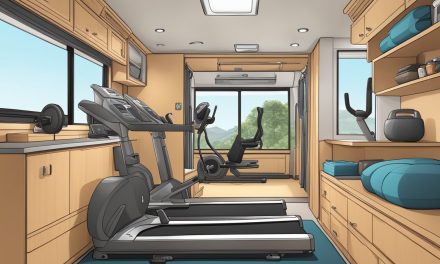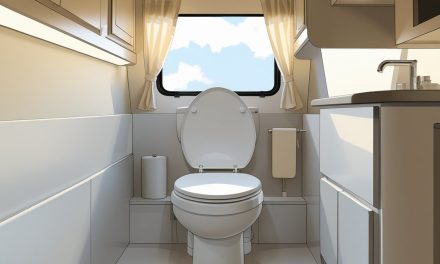Would you like to save this article?
While you might picture RVs as vacation vehicles for weekend warriors and retired couples living their best lives, the reality is far more sobering. America’s RV homelessness crisis has reached unprecedented levels in 2025, with over 653,000 people experiencing homelessness nationwide. What’s truly shocking is the hidden population living in cars, vans, and RVs that official counts barely capture. These aren’t lifestyle choices or Instagram-worthy nomad adventures – they’re desperate survival strategies in a housing market that has fundamentally failed working families.
You’re about to discover seven harsh realities about vehicle homelessness that challenge everything you thought you knew. From the devastating financial trap of RV living to the dangerous reality of finding safe parking, these truths reveal why thousands of Americans are choosing wheels over walls – not by choice, but by necessity. This isn’t just happening in major cities like Los Angeles or Seattle; it’s spreading to communities across the country where affordable housing has become as rare as unicorns.
1. Your Monthly RV Costs Could Actually Exceed Apartment Rent
Here’s the financial shocker that’ll make your head spin: living in an RV isn’t the money-saving solution people think it is. While families initially spend $3,000 to $8,000 on a used RV hoping to escape crushing rent payments, the monthly expenses quickly add up to a brutal reality check.
You’re looking at $5-15 daily just for generator fuel because most RV dwellers lack electrical hookups. That’s potentially $450 per month just to keep the lights on! Water refills and waste disposal tack on another $40-100 monthly, while insurance and registration demands $500-1,200 annually. Don’t even get started on repairs – when your home breaks down, you’re looking at catastrophic expenses that can rival a security deposit.
| Monthly RV Living Expenses | Cost Range |
|---|---|
| Generator Fuel | $150-450 |
| Water/Waste Services | $40-100 |
| Insurance & Registration | $40-100 |
| Repairs & Maintenance | $100-500 |
| Total Monthly | $330-1,150 |
Here’s the kicker: Many RV dwellers end up spending $600-1,200 monthly just surviving – amounts that rival the very rent they desperately tried to escape. You thought you were escaping financial pressure, but you’ve actually entered a mobile poverty trap with wheels and a whole lot more stress.
2. The Notorious “10-Year Rule” Is Crushing Dreams and Creating Outcasts
You’ve probably never heard of the 10-year rule, but it’s systematically destroying the last refuge for struggling families across America. Private campgrounds nationwide automatically ban any RV manufactured more than 10 years ago, regardless of its condition or livability.
Picture this: You have a pristine, fully operational 2008 motor home that’s better maintained than some brand-new units, but it gets rejected purely based on its birth certificate. This policy creates a devastating catch-22 that would make your heart break. Most affordable RVs accessible to struggling families are older than 10 years, while upgrading to a newer model costs $50,000 or more – an impossible sum for people who chose RV living because they couldn’t afford traditional housing.
The consequences are predictably cruel. Families get expelled from safe, legal campgrounds and forced onto industrial streets, remote pulloffs, or into endless nomadic cycles. What campground owners market as “quality standards” functions as pure economic discrimination – a policy that drives vulnerable people deeper underground simply because their shelter has too many birthdays.
You’re witnessing age-based segregation that transforms RV living from challenging into nearly impossible, making homelessness even more precarious. It’s like being denied housing because your apartment building was constructed before 2015 – absolutely ridiculous, but devastatingly real for thousands of families.
3. Cities Are Waging War Against RV Dwellers Instead of Helping Them
Your tax dollars are funding a systematic campaign to criminalize survival itself rather than address the root causes of vehicle homelessness. Cities nationwide are responding to the explosion in RV living not with housing solutions, but with aggressive enforcement that treats basic human needs as criminal acts.
Los Angeles, home to over 10,000 vehicle dwellers, has expanded no-parking zones across hundreds of streets. Portland forces constant movement with 24-hour parking limits that make rest impossible. Phoenix ramps up aggressive towing under the guise of “sanitation concerns,” with impound fees exceeding $1,000 – often more than the vehicle’s actual value.
Here’s the cruel mathematics: Tickets cost $25-75, but unpaid fines snowball into thousands of dollars. For people surviving paycheck to paycheck, losing their RV means instant homelessness with no recovery path. Each tow potentially destroys someone’s only shelter, leaving families with nowhere to go but the streets.
You’d think cities would create solutions, but instead they push vehicle dwellers into increasingly dangerous areas away from jobs, schools, and essential services. This strategy hides the crisis from public view without addressing root causes – essentially moving the problem around like a shell game while making survival exponentially more dangerous for people already clinging to stability by their fingernails.
4. Safe Parking Programs Exist, But They’re Laughably Inadequate
You might feel hopeful learning about safe parking programs – designated lots where RV dwellers can legally park overnight with access to bathrooms, security, and case managers. Cities like San Diego, Santa Barbara, and Seattle have created these programs to provide stability and connect residents to permanent housing resources.
But here’s the devastating reality check: San Diego’s safe parking program offers fewer than 300 spaces for over 2,000 vehicle dwellers. That’s like having 3 lifeboats for 20 people on a sinking ship. Waiting lists stretch for months while demand accelerates faster than program expansion.
In Los Angeles County, there are only 17 safe parking sites with 439 spaces available, serving approximately 508 people. That’s a fraction of the estimated 11,124 vehicles housing people countywide. You’re looking at coverage for less than 5% of those who need it – making these programs feel more like lottery tickets than actual solutions.
You’d think success stories would inspire expansion, but funding remains the primary barrier. Without secure financing, even thriving pilot programs remain perpetually vulnerable – one budget vote away from elimination. Meanwhile, thousands continue cycling through industrial zones and parking lots, desperately seeking that one peaceful night’s sleep.
5. Vehicle Dwellers Face Terrifying Safety Risks That Housed People Never Consider
Your worst nightmare about safety becomes daily reality for people living in RVs and vehicles. After sunset, vehicle-based homeless face escalating dangers that housed residents never have to consider, making every night a calculated risk between visibility and vulnerability.
The statistics paint a terrifying picture that would keep you awake at night. A 2023 National Vehicle Residency Coalition report documented over 17,000 incidents of theft, vandalism, or assault against vehicle dwellers across just five major cities. Women and seniors face disproportionate risks, with UCLA research revealing that 42% of women living in vehicles experienced harassment or stalking.
You can’t imagine the psychological toll of sleeping while clutching pepper spray or relying on guard dogs for protection. Thieves systematically target propane tanks, generators, and batteries – essential survival equipment that keeps families alive but can be stolen within minutes and resold for quick cash.
Here’s the cruel paradox that would break your heart: Reporting crimes often triggers parking citations, eviction orders, or vehicle impoundment – punishing victims for seeking help. This reality forces thousands into constant hypervigilance where sleep becomes fitful, physical health deteriorates, and psychological stress accumulates relentlessly.
You’re looking at people who must choose between remaining visible enough for potential safety or staying invisible enough to avoid unwanted attention. For vehicle dwellers, darkness doesn’t bring rest – it brings fear.
6. The Tourist Industry Is Deliberately Pricing Out Desperate Families
You probably view campgrounds as family-friendly vacation destinations, but the RV industry has made a calculated decision to abandon America’s most vulnerable in pursuit of higher profits. Budget-friendly campgrounds that once provided essential refuge for RV dwellers are rapidly disappearing across popular states like Florida, Arizona, and California.
Parks that once charged $400-600 monthly now demand $900-1,200 if they accept long-term residents at all. Many have completely abandoned full-time residents, pivoting to short-term vacation rentals that generate triple the revenue during peak seasons. The industry views financially struggling permanent residents as less profitable and more problematic than tourists.
You’re witnessing a systematic transformation where tourism profits matter more than housing stability. The notorious 10-year rule delivers another crushing blow, but even parks without age restrictions increasingly favor short-term tourists over families desperately seeking stability.
This industry shift triggers devastating consequences that would make your heart ache. Families expelled from affordable campgrounds get forced onto industrial streets, vacant lots, or remote areas without utilities. What appeared to be their last safety net gets yanked away by an industry that has decided their survival is less important than vacation revenue.
You can see the message couldn’t be clearer: Tourism profits matter more than human dignity. The RV industry has made its choice, and it’s not about helping people in crisis.
7. America’s Vehicle Homelessness Is About to Explode Beyond Imagination
You think the current crisis is bad? Brace yourself, because all warning signs point to an explosion in vehicle homelessness that will dwarf today’s already staggering numbers. The foundation for disaster is already set in concrete, and it’s about to get much worse.
The National Low-Income Housing Coalition reports a shortage exceeding 7 million affordable rental homes nationwide. Wages continue falling behind inflation while basic living costs surge relentlessly. Eviction protections have vanished in most states, leaving families defensively exposed to housing loss like sitting ducks.
You’re looking at economic pressure that will inevitably push countless additional families toward vehicles as their final refuge. This vulnerability extends far beyond current poverty populations – retirees surviving on eroding fixed incomes, gig workers facing unpredictable earnings, and middle-class families in expensive metropolitan areas all teeter on the precipice.
What policymakers dismiss as a fringe issue actually previews the potential fate of millions more Americans. Aging RVs, converted vans, and deteriorating trailers will absorb successive waves of displaced families in what could become the largest housing displacement in American history.
You’re witnessing a preview of America’s future unless fundamental policy reforms happen immediately. The choice is stark: treat RV dwellers as neighbors deserving stability and support, or criminalize them while watching the crisis consume entire communities. That decision will determine whether RVs serve as temporary lifelines toward housing recovery or become America’s final stop before complete destitution.
SOURCES
- HUD 2024 Annual Homelessness Assessment Report – National homelessness statistics showing 770,000 people experiencing homelessness
- Minneapolis Federal Reserve – Who is Homeless in the US: 2025 Update – Homelessness increase data from 1.75 to 2.3 per 1,000 people
- Safe Parking LA Impact Report 2023 – Vehicle homelessness statistics and program data
- LAHSA Safe Parking Program – Los Angeles safe parking statistics and program information
- UCLA Research on Vehicle Homelessness – 40% of unsheltered homeless in LA County live in vehicles
- US Interagency Council on Homelessness – Vehicle Homelessness Response – Federal data on vehicle dwelling and safe parking programs
- YouTube: RV Homelessness Is Exploding Across America (2025 Report) – Original video source by Rollin With Rver channel
- National Low Income Housing Coalition – Housing shortage statistics and rental data
- End Homelessness Organization State of Homelessness 2025 – Current homelessness trends and





